For the 2025 school year, there are 2 public charter schools serving 522 students in KIPP Charter School District. This district's average charter testing ranking is 1/10, which is in the bottom 50% of public charter schools in Oklahoma.
Public Charter Schools in KIPP Charter School District have an average math proficiency score of 3% (versus the Oklahoma public charter school average of 14%), and reading proficiency score of 7% (versus the 20% statewide average).
Minority enrollment is 98% of the student body (majority Black), which is more than the Oklahoma public charter school average of 59% (majority Hispanic).
Overview
This School District
This State (OK)
# Schools
2 Schools
78 Schools
# Students
522 Students
71,886 Students
# Teachers
36 Teachers
3,238 Teachers
Student : Teacher Ratio
15:1
15:1
District Rank
KIPP Charter School District, which is ranked within the bottom 50% of all 533 school districts in Oklahoma (based off of combined math and reading proficiency testing data) for the 2021-2022 school year.
Overall District Rank
#536 out of 538 school districts
(Bottom 50%)
(Bottom 50%)
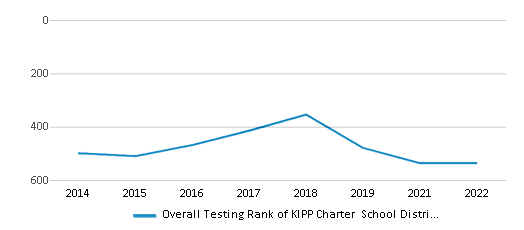
Math Test Scores (% Proficient)
2%
25%
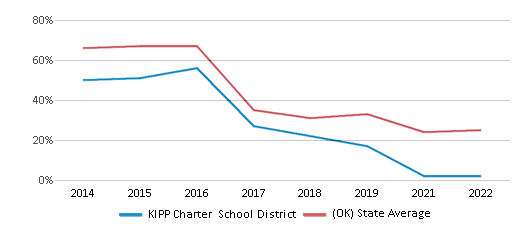
Reading/Language Arts Test Scores (% Proficient)
8%
27%
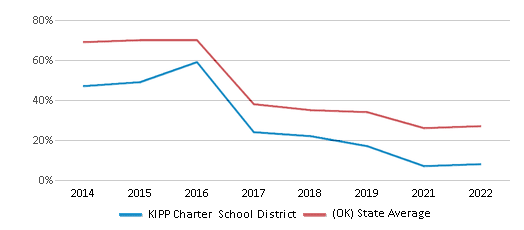
Science Test Scores (% Proficient)
6-9%
31%
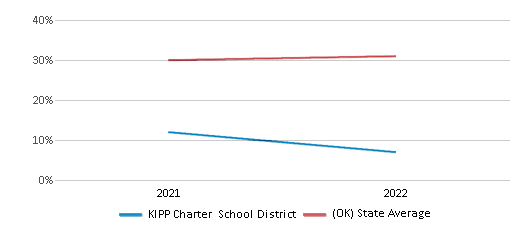
Students by Ethnicity:
Diversity Score
0.43
0.73
# American Indian Students
15 Students
3,478 Students
% American Indian Students
3%
5%
# Asian Students
n/a
538 Students
% Asian Students
n/a
1%
# Hispanic Students
65 Students
18,566 Students
% Hispanic Students
12%
26%
# Black Students
389 Students
8,227 Students
% Black Students
75%
11%
# White Students
12 Students
29,127 Students
% White Students
2%
41%
# Hawaiian Students
3 Students
96 Students
% Hawaiian Students
1%
n/a
# Two or more races Students
38 Students
11,849 Students
% of Two or more races Students
7%
16%
Students by Grade:
# Students in PK Grade:
-
2,555
# Students in K Grade:
-
3,759
# Students in 1st Grade:
-
3,807
# Students in 2nd Grade:
-
3,874
# Students in 3rd Grade:
-
3,977
# Students in 4th Grade:
-
3,677
# Students in 5th Grade:
-
4,158
# Students in 6th Grade:
96
5,957
# Students in 7th Grade:
78
6,552
# Students in 8th Grade:
70
7,126
# Students in 9th Grade:
97
7,327
# Students in 10th Grade:
64
6,626
# Students in 11th Grade:
57
6,731
# Students in 12th Grade:
60
5,760
# Ungraded Students:
-
-
District Revenue and Spending
The revenue/student of $11,420 is higher than the state median of $10,983. The school district revenue/student has grown by 10% over four school years.
The school district's spending/student of $10,831 is less than the state median of $10,957. The school district spending/student has grown by 10% over four school years.
Total Revenue
$6 MM
$7,919 MM
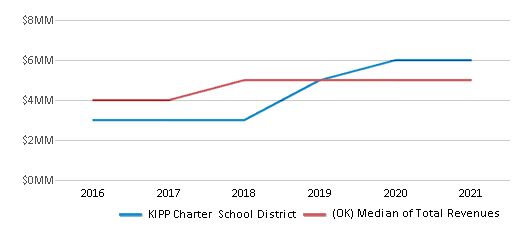
Spending
$6 MM
$7,900 MM
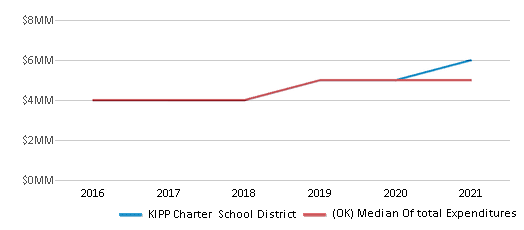
Revenue / Student
$11,420
$10,983
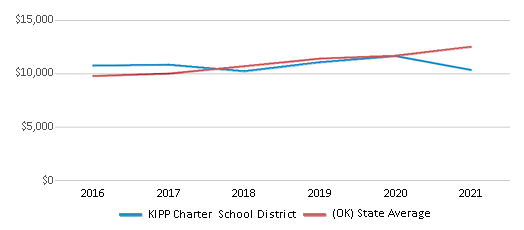
Spending / Student
$10,831
$10,957
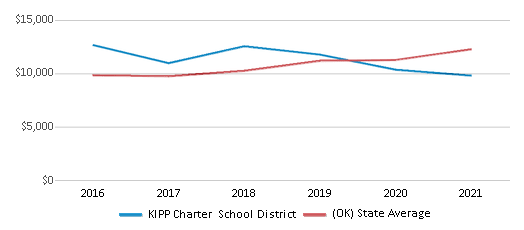
Best KIPP Charter School District Public Charter Schools (2025)
School
(Math and Reading Proficiency)
(Math and Reading Proficiency)
Location
Grades
Students
Rank: #11.
Kipp Tulsa University Prep
Charter School
(Math: ≤10% | Reading: ≤10%)
Rank:
Rank:
1/
Bottom 50%10
541 S 43rd Street W Ave
Tulsa, OK 74127
(918) 833-8822
Tulsa, OK 74127
(918) 833-8822
Grades: 9-12
| 278 students
Rank: #22.
Kipp Tulsa Acad. College Prep.
Charter School
(Math: 2% | Reading: 7%)
Rank:
Rank:
1/
Bottom 50%10
1661 E Virgin Street
Tulsa, OK 74106
(918) 794-8652
Tulsa, OK 74106
(918) 794-8652
Grades: 6-8
| 244 students
Recent Articles

Year-Round Or Traditional Schedule?
Which is more appropriate for your child? A year-round attendance schedule or traditional schedule? We look at the pros and cons.

Why You Should Encourage Your Child to Join a Sports Team
Participating in team sports has a great many benefits for children, there is no doubt. In this article you will learn what those benefits are.

White Students are Now the Minority in U.S. Public Schools
Increasing birth rates among immigrant families from Asia and Central and South America, combined with lower birth rates among white families, means that for the first time in history, public school students in the United States are majority-minority. This shift in demographics poses difficulties for schools as they work to accommodate children of varying language abilities and socio-economic backgrounds.





